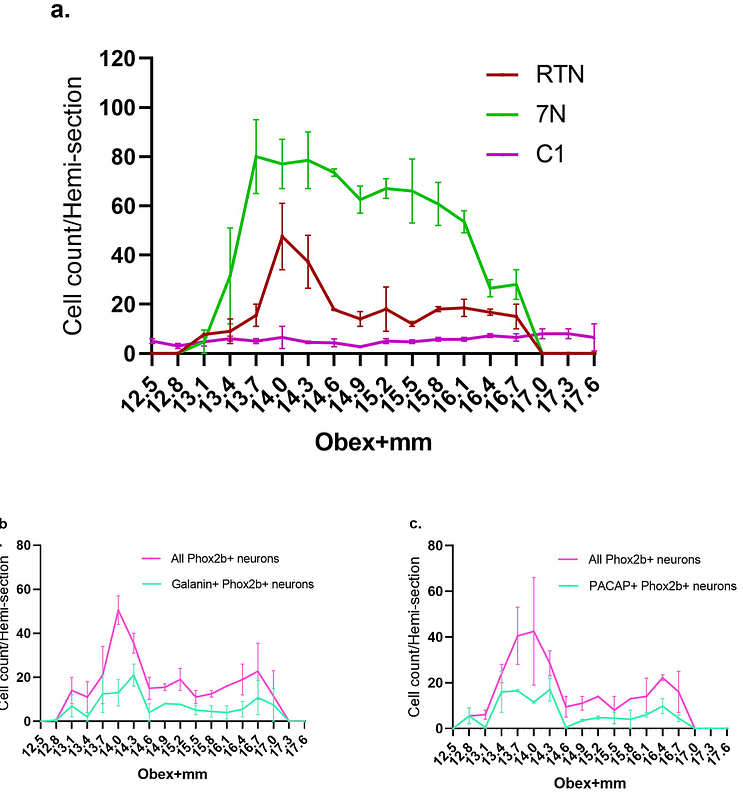Characterisation of putative retrotrapezoid nucleus (RTN) chemoreceptor neurons in the adult human brainstem

Characterisation of putative retrotrapezoid nucleus (RTN) chemoreceptor neurons in the adult human brainstem
Liu, Y.; Machaalani, R.; Markus, I.; Shepherd, C. E.; Kumar, N. N.
AbstractThe retrotrapezoid nucleus of rodents (RTN) is located ventral to the facial motor nucleus (7N) and consists of acid-sensitive neurons that activate breathing and mediate the central component of the ventilatory response to hypercapnia (HCVR). In rats and mice RTN neurons can be histologically identified by the presence of paired-like homeobox 2B positive nuclei (Phox2b+) and the absence of cytoplasmic choline acetyltransferase (ChAT-) and tyrosine hydroxylase (TH-). Furthermore, up to 50% of rodent RTN neurons synthesise galanin, and 100% express pituitary adenylate cyclase activating polypeptide (PACAP) and neuromedin B (NMB). The human RTN (hRTN) has been tentatively identified in two infant studies and one adult study, but it was not mapped. This study aimed to map the location and cytoarchitecture of the adult hRTN and compare the findings to the literature of rodents, macaque and human infants. Formalin-fixed, paraffin-embedded tissue blocks from two adult cases, spanning the medulla-pons, were serially sectioned (10m thick) and every four in thirty sections were immunohistochemically stained with ChAT, and double stained Phox2b/TH, Phox2b/galanin and Phox2b/PACAP. Immunostained sections were scanned and analysed using QuPath software. hRTN neurons were identified by their Phox2b positive (Phox2b+) nucleus and negative cytoplasm for TH and ChAT (Phox2b+/TH-/ChAT-). Such neurons were identified ventral to 7N, lateral to the superior olive, overlapped with the C1 catecholaminergic population and extended rostrocaudally from Obex +13 mm to Obex +17 mm. hRTN neurons comprised 90% of Phox2b+ neurons in the parafacial area, totaling around 5000 bilaterally, and were surrounded by numerous TH-ir fibers. Galanin and PACAP immunoreactivity was identified in 43% and 38% of Phox2b+ parafacial neurons, respectively. This is the first study to characterise and quantitatively map the adult human RTN using a series of neurochemical markers.